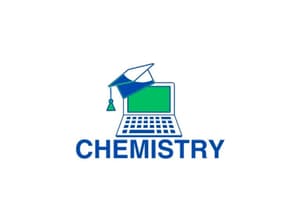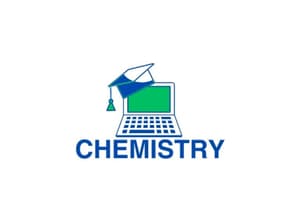Podcast
Questions and Answers
Which of the following describes the formation of an anion?
Which of the following describes the formation of an anion?
- An atom loses protons.
- An atom gains electrons. (correct)
- An atom gains positive charge.
- An atom loses neutrons.
What is the significance of achieving a 'stable octet' in the context of chemical bonding?
What is the significance of achieving a 'stable octet' in the context of chemical bonding?
- It implies the atom now behaves like a radioactive isotope.
- It indicates the atom has achieved maximum positive charge.
- It signifies the atom has a full outermost electron shell, similar to noble gases, making it stable. (correct)
- It means the atom has exactly eight protons in its nucleus.
In a chemical equation, what information does the coefficient provide?
In a chemical equation, what information does the coefficient provide?
- The physical state (solid, liquid, gas) of the substances
- The speed at which the reaction occurs
- The color of the reactants and products
- The relative amounts of reactants and products involved in the reaction (correct)
How does a base typically affect the concentration of hydrogen ions (H+) in a solution?
How does a base typically affect the concentration of hydrogen ions (H+) in a solution?
Which of the following is an example of a chemical change?
Which of the following is an example of a chemical change?
What is the primary difference between a homogeneous and a heterogeneous mixture?
What is the primary difference between a homogeneous and a heterogeneous mixture?
How is the number of electron shells related to the period (row) an element is in on the periodic table?
How is the number of electron shells related to the period (row) an element is in on the periodic table?
What information is provided by the atomic number of an element?
What information is provided by the atomic number of an element?
Which of the following statements correctly describes the relationship between atoms and ions?
Which of the following statements correctly describes the relationship between atoms and ions?
What is the purpose of using Roman numerals when naming some ionic compounds containing transition metals?
What is the purpose of using Roman numerals when naming some ionic compounds containing transition metals?
What is the correct name for the compound with the formula $N_2O_5$?
What is the correct name for the compound with the formula $N_2O_5$?
In the formula $Al_2(SO_4)_3$, what does the subscript '3' outside the parentheses indicate?
In the formula $Al_2(SO_4)_3$, what does the subscript '3' outside the parentheses indicate?
In a word equation, when should a Roman numeral be included in the name of a compound?
In a word equation, when should a Roman numeral be included in the name of a compound?
According to the Law of Conservation of Mass, what must be true in a balanced chemical equation?
According to the Law of Conservation of Mass, what must be true in a balanced chemical equation?
Which of the following is an example of a decomposition reaction?
Which of the following is an example of a decomposition reaction?
In a single displacement reaction, what typically occurs?
In a single displacement reaction, what typically occurs?
Which of the following is a characteristic property of acids?
Which of the following is a characteristic property of acids?
What does the pH scale measure?
What does the pH scale measure?
What is the difference between a pH of 3 and a pH of 5?
What is the difference between a pH of 3 and a pH of 5?
In the context of acids, what does the suffix '-ic' typically indicate when naming oxyacids?
In the context of acids, what does the suffix '-ic' typically indicate when naming oxyacids?
If an element is located on the right side of the periodic table, what characteristics would it likely have?
If an element is located on the right side of the periodic table, what characteristics would it likely have?
Which family is known as the 'Noble Gases'?
Which family is known as the 'Noble Gases'?
What is the formula for Magnesium Nitride?
What is the formula for Magnesium Nitride?
What family is named 'Halogens'?
What family is named 'Halogens'?
Which of the following is not considered matter:
Which of the following is not considered matter:
What is the formula name for $BCl_3$?
What is the formula name for $BCl_3$?
An aqueous solution:
An aqueous solution:
What does ate equals in oxyacids?
What does ate equals in oxyacids?
A pH of 14 means:
A pH of 14 means:
Which of the following acids would include the word 'hydro' at the beginning of its name?
Which of the following acids would include the word 'hydro' at the beginning of its name?
Which of the following shows a single displacement reaction?
Which of the following shows a single displacement reaction?
Which of the following is not true regarding acids?
Which of the following is not true regarding acids?
Which of the following examples are pure substances?
Which of the following examples are pure substances?
Using Criss Cross, what's the formula for Silver Oxide?
Using Criss Cross, what's the formula for Silver Oxide?
Flashcards
Ion
Ion
An atom or molecule with a net electric charge due to the loss or gain of electrons.
Cation
Cation
A positively charged ion formed by losing electrons.
Anion
Anion
A negatively charged ion formed by gaining electrons.
Ionic charge
Ionic charge
Signup and view all the flashcards
Combining capacity
Combining capacity
Signup and view all the flashcards
Valence electron
Valence electron
Signup and view all the flashcards
Stable octet
Stable octet
Signup and view all the flashcards
Polyatomic ion
Polyatomic ion
Signup and view all the flashcards
Binary compound
Binary compound
Signup and view all the flashcards
Ternary compound
Ternary compound
Signup and view all the flashcards
Ionic bond
Ionic bond
Signup and view all the flashcards
Covalent bond
Covalent bond
Signup and view all the flashcards
Molecule
Molecule
Signup and view all the flashcards
Binary covalent compound
Binary covalent compound
Signup and view all the flashcards
Reactant
Reactant
Signup and view all the flashcards
Product
Product
Signup and view all the flashcards
Chemical reaction
Chemical reaction
Signup and view all the flashcards
Chemical equation
Chemical equation
Signup and view all the flashcards
Coefficient
Coefficient
Signup and view all the flashcards
Acid
Acid
Signup and view all the flashcards
Base
Base
Signup and view all the flashcards
Ionization
Ionization
Signup and view all the flashcards
Dissociation
Dissociation
Signup and view all the flashcards
pH scale
pH scale
Signup and view all the flashcards
Neutralization
Neutralization
Signup and view all the flashcards
Matter
Matter
Signup and view all the flashcards
Physical Properties
Physical Properties
Signup and view all the flashcards
Chemical Properties
Chemical Properties
Signup and view all the flashcards
Physical Changes
Physical Changes
Signup and view all the flashcards
Chemical Changes
Chemical Changes
Signup and view all the flashcards
Pure Substances
Pure Substances
Signup and view all the flashcards
Mixtures
Mixtures
Signup and view all the flashcards
Period
Period
Signup and view all the flashcards
Atomic Number
Atomic Number
Signup and view all the flashcards
Metalloids
Metalloids
Signup and view all the flashcards
Study Notes
- An ion is an atom or molecule that has gained or lost one or more electrons, giving it an electrical charge.
- A cation is a positively charged ion formed when an atom loses electrons.
- An anion is a negatively charged ion formed when an atom gains electrons.
- Ionic charge refers to the positive or negative charge on an ion, resulting from the loss or gain of electrons.
- Combining capacity is the ability of an element to form chemical bonds with other elements, often indicated by its valency.
- Valence electrons are the electrons in the outermost shell of an atom that participate in bonding.
- A stable octet refers to the tendency of atoms to achieve eight valence electrons to mimic the stability of noble gases.
- A polyatomic ion is an ion composed of multiple atoms bound together, carrying an overall charge.
- A binary compound contains two different elements.
- A ternary compound contains three different elements.
- An ionic bond is formed through electrostatic attraction between oppositely charged ions, typically between a metal and a nonmetal.
- A covalent bond involves the sharing of electron pairs between atoms, usually between two nonmetals.
- A molecule is a neutral group of two or more atoms held together by covalent bonds.
- A binary covalent compound is formed by covalent bonding between two nonmetals.
- A reactant is a substance that undergoes change during a chemical reaction.
- A product is a substance that is produced as a result of a chemical reaction.
- A chemical reaction is a process converting reactants into products.
- A chemical equation symbolically represents a chemical reaction, indicating the reactants, products, and their states.
- A coefficient is a number placed before a chemical formula in an equation to balance it.
- An acid donates protons (H+) in solution and typically has a pH less than 7.
- A base accepts protons (H+) or donates hydroxide ions (OH-) in solution, typically having a pH greater than 7.
- Ionization is the process of forming ions by gaining or losing electrons or the dissociation of acids and bases into ions.
- Dissociation is the process by which an ionic compound separates into its ions in a solution.
- The pH scale measures the acidity or basicity of a solution, ranging from 0 to 14.
- Neutralization is a reaction between an acid and a base to form water and a salt, reducing acidity or basicity.
- Matter has mass and takes up space, excluding forms of energy such as sound, light, and heat.
- Matter is classified by chemical and physical properties.
Properties and Changes
- Physical properties can be observed directly, for example, color, smell, and taste.
- Chemical properties describe how a substance reacts chemically, such as flammability, pH, and solubility.
- Physical changes alter the appearance or state of matter without changing its chemical composition, like water freezing.
- Chemical changes result in the formation of a new substance with different chemical properties and are often irreversible, such as baking a cake.
Pure Substances vs Mixtures
- Pure substances include elements and compounds.
- Mixtures are classified as homogeneous or heterogeneous.
- Homogeneous mixtures have uniform composition where ingredients are not visible, for example, orange juice.
- Heterogeneous mixtures have non-uniform composition where ingredients are visible, for example, pizza.
The Periodic Table
- Metals are on the left side of the periodic table, while nonmetals are on the right.
- Periods are horizontal rows which indicates the number of electron shells an atom has.
- Groups are vertical columns that indicates the number of electrons in the outermost shell.
- The atomic number indicates the number of electrons orbiting the nucleus.
- The atomic mass is the total number of protons and neutrons in an atomic nucleus.
- Valence electrons are located on the outermost shell of an atom.
Families in Periodic Table
- Alkali metals are in Group 1A.
- Alkaline earth metals are in Group 2A.
- Transition metals are located in the middle of the periodic table.
- Halogens are in Group 7A.
- Noble gases are in Group 8A.
- Metalloids are along the staircase line.
Drawing Bohr-Rutherford Diagrams
- Represent the nucleus as a solid circle.
- Include the number of protons (atomic number) and neutrons in the nucleus.
- Find the number of neutrons by subtracting the atomic number from the atomic mass.
- Place the number of electrons in orbits around the nucleus, following the rule of 2 electrons in the 1st shell, 8 in the 2nd, and 8 in the 3rd.
Atoms vs Ions
- Atoms are electrically neutral.
- The number of protons equals the number of electrons in an atom.
- Protons are positively charged and located in the nucleus.
- Electrons are negatively charged and orbit the nucleus.
- Neutrons have no charge and are located in the nucleus.
- Atomic number equals number of protons and electrons.
- Neutrons equals mass number minus atomic number.
- Ions are atoms that have gained or lost electrons, resulting in a charge.
- Cations are ions with a positive charge due to lost electrons.
- Anions are ions with a negative charge due to gained electrons.
Types of Compounds
- Binary ionic compounds are formed when a metal reacts with a nonmetal.
Explaining Roman Numerals
- Roman numerals indicate the charge of a transition metal in an ionic compound, since transition metals can have multiple charges.
- Roman numerals follow the criss-cross rule.
- Example: Copper (II) Chloride = CuCl₂
Ionic Compounds (Criss-Cross)
- Potassium chloride: KCI
- Lithium Oxide: Li2O
- Calcium Bromide: CaBr2
- Always add "ide" to the end of the name.
Writing Ionic Formulas (Criss-cross)
- Silver oxide - Ag2O
- Aluminum nitride - Al3N3
- Magnesium nitride - Mg3N2
- Calcium hydride- CaH2
Binary Covalent Compounds (Molecular)
- These compounds are formed when two nonmetals react.
- Covalent prefixes indicate the number of each element in the compound.
- Dihydrogen Oxide: H2O
- Carbon dioxide: CO2
- Boron trichloride: BCl3
Covalent prefixes
- Mono
- Di
- Tri
- Tetra
- Penta
Polyatomic Ions
- Groups of two or more atoms that stick together and have an overall charge.
- They act like a single unit in chemical reactions.
- Example - Sulfate (SO₄²⁻) has one sulfur atom and four oxygen atoms,.and it has a -2 charge.
- Only Criss-Cross the charge outside of the bracket.
- Example - Ba(NO₃)² = Ba₂NO₃
Word, Skeleton and Balanced Chemical Equations
- Word equations describe chemical reactions using the names of substances.
- Reactant 1 + Reactant 2 → Product 1 + Product 2
- Include Roman numerals for transition metals without criss-crossing.
- Example: Aluminum + Oxygen -> Aluminum Oxide
- Skeleton equations represent reactions using chemical formulas without balancing.
- Criss-cross method must be applied to write formulas correctly.
- Example: Al₃ + O₂ -> Al₂O₃
- Balancing equations ensures the number of atoms are equal on both sides.
- The Law of Conservation states mass of reactants equals mass of products.
- Example: 2Fe + 3H₂SO₄ -> Fe₂(SO₄)₃ + 3H₂
Diatomic molecules
- IHNFCLBRO (H₂, N₂, O₂, Cl₂, Br₂, I₂, and F₂)
Classifying Chemical Reactions
- Synthesis is when 2 simple elements (reactants) combine to form 1 larger and more complex molecule (product)
- Decomposition is the reverse of synthesis.
- Single displacement reactions occur when one element displaces another in a compound.
- Double displacement reactions occur when two elements in different compounds trade places.
- Combustion reactions involve a fuel reacting rapidly with oxygen, releasing energy as heat and light.
Acids
- An aqueous solution that:
- Conducts electricity
- Tastes sour
- Turns blue litmus red
- Neutralizes bases
Bases
- An aqueous solution that:
- Feels slippery
- Taste bitter
- Conducts electricity
- Turns red litmus blue
pH Scale
- Measures the concentration of hydrogen ions (H+) in a solution.
- Each increment represents a factor of 10.
- Solutions with a high concentration of hydrogen ions = Acidic.
- Solutions with a low concentration of hydrogen ions = Basic or Alkaline.
- The scale ranges from 0-14
- pH 0 :being most acidic - High concentration of H+.
- pH 14 = most basic - Low concentration of H+ /High concentration of OH-.
- pH 7 = neutral - Equal concentrations of H+ and OH- .
Naming Acids
- Binary acids contains two elements.
- Oxyacids contains polyatomic ions.
- Add Hydro to the beginning (H if it is a formula)
- Always use the criss cross method with charges
- Ite = ous
- Ate = ic
- If a roman numeral is next to a transition element, Still use Criss Cross Method
Rules for Oxyacids
- Drop the “Hydro”, Keep the H in the formula
- Add Acid at the end of every Acid
- Ite = ous
- Ate = ic
Studying That Suits You
Use AI to generate personalized quizzes and flashcards to suit your learning preferences.




